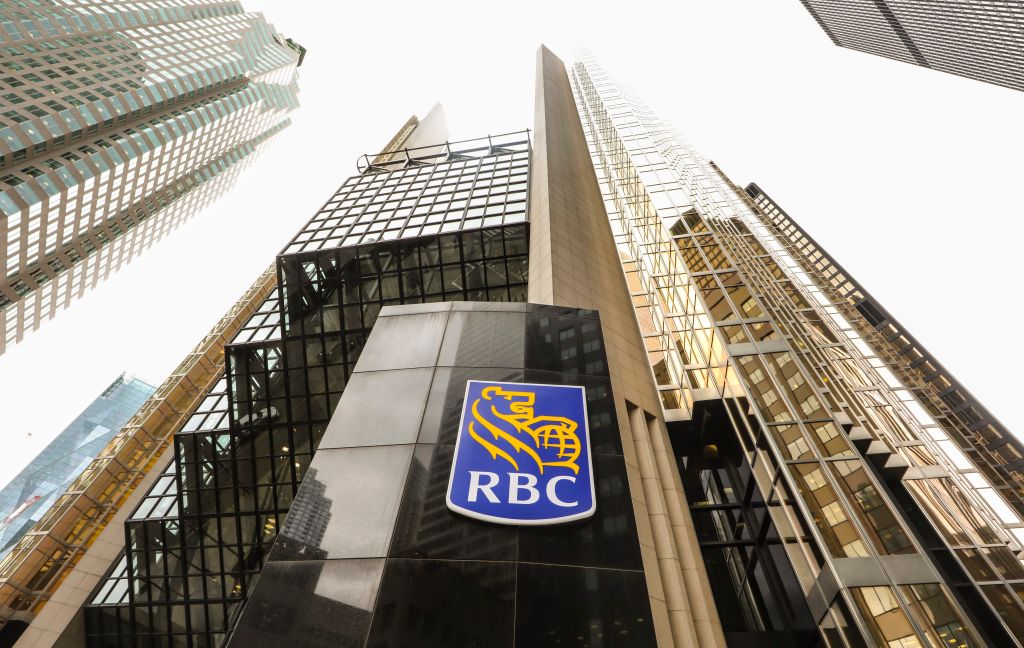RBC acknowledges that some borrowers are experiencing stress despite the fact they have higher rates of interest and increased payments.
RBC’s mortgage 90+-day delinquencies increased to 0.20% during Q2, compared with 0.19% for Q1 and 0.12% at the same point last year.
Chief Risk Officer Graeme Hepworth said that the continuing depletion in savings of many Canadians that they had built up after the pandemic is a sign of consumer stress.
The Canadian consumer is resilient because they have built up an enormous amount of buffer and savings since the outbreak of the pandemic. “We have seen this, on average, decline over the past few years”, he added.
Hepworth addressed the greater challenges faced by variable rate mortgage customers of his bank who had been forced to increase their payments to compensate for rising interest rates.
RBC offers the same products and services as TD, BMO, and CIBC. fixed-payment variable-rate mortgages. Although their payment does not change, the rising rates of interest have caused a greater percentage to go toward the interest portion and a lesser percentage towards the principal.
Some people have hit the bottom. trigger rateIf they do not take action to raise their payment, they will no longer be able to pay down their debt.
Hepworth explained: “This is a reflection of the clients who have been facing payment triggers, and have not had the same level of resilience.” We see that cash reserves and buffers are starting to diminish. We still have a healthy Canadian economy, but we do see pockets of stress. So we increased our reserves and allowances accordingly.
Analysts had predicted that the total provision for credit loss, which is the amount of money banks have to keep in reserve as a buffer against future potential losses, would be $920 millions, but the actual figure was higher. This is up from $813 in Q1 2023 and $600 in Q2 of that year.
RBC still managed to beat its competitors this quarter with a net adjusted income of $ 4 billion. This is an increase of 11% over last year.
HSBC Canada client retention
The first quarter results to be released include the figures of HSBC Canada following RBC’s acquisition for $5 billion, which was completed on March 28, 2009.
Dave McKay, President and CEO of HSBC Canada said: “We are excited to welcome the 780,000 new clients who have added an additional $75 billion in loans and relationship-based deposits.
An analyst asked the question during the most recent earnings call. He was specifically interested in the retention strategy for RBC’s roughly 130,000 new mortgage customers. HSBC Canada, a leader in the mortgage market for certain products with competitive rates and flexible choices attracted a large number of clients.
“So, [HSBC] Neil McLaughlin is the Group Head of Personal & Commercial Banking. “They did use a strategy that led with a price aggressive, but did not really discount when they began the discussion with the customer,” he said. We’re pleased with the spreads on the mortgage book, and I’d say we have been aggressively pursuing that business.
In the first months, he said that RBC reported a rate of renewal “a bit higher” than its current mortgage portfolio. McLaughlin said, “We’re quite happy about it. I would definitely place that into the opportunity category.”
Bank of Canada Rate Cut Impact
If you are asked when the deadline for Bank of Canada The Chief Risk Officer Graeme Hepworth said that the rate cut will have a “meaningful” impact on bank loan losses.
The unemployment rate will be a major factor. [and] “What’s going on with the house prices?” he asked.
He added, “Certainly, our base-case forecast for Canada does expect…100 basis point rate cuts before the end of the year, and another 100 the following year.”
The bank is expecting only a quarter-point cut in rates this year, and another 50 basis points by 2025.
RBC Residential Mortgage Portfolio by remaining amortization Period
| Q2 2023 | Q1 2024 | Q2 2024 | |
|---|---|---|---|
| Aged 25 and under | 57% | 58% | 58% |
| Age 25 to 29 | 17% | 21% | 21% |
| 30 to 34 years | 1% | 1% | 2% |
| Age 35+ | 25% | 20% | 19% |
RBC Earnings Highlights
Q2 net income (adjusted): $4,2 billion (+11 % Y/Y).
Earnings per share: $2.92
| Q2 2023 | Q1 2024 | Q2 2024 | |
| Residential mortgage portfolio | $356B | $366B | $401B |
| HELOC portfolio | $35B | $35B | $37B |
| Uninsured mortgages as a percentage of total portfolio | 76% | 78% | 78% |
| Avg. Avg. | 71% | 71% | 71% |
| Portfolio mix – percentage of variable rate rates | 32% | 27% | 29% |
| Calculate the remaining amortization | Age: 26 | 24-year-olds | 24-year-olds |
| 90+ days past due | 0.12% | 0.19% | 0.20% |
| Gross impaired mortgage portfolio | 0.10% | 0.16% | 0.18% |
| Canadian Banking Net Interest Margin (NIM). | 2.73% | 2.72% | 2.76% |
| Credit Loss Provision | $600M | $813M | $920M |
| CET1 Ratio | 13.7% | 14.9% | 14.5% |
Conf Call
- Residential mortgage volumes were up 6% year-over-year and 3.2% quarter-over-quarter.
- “…net margins of interest were affected by the shift from term deposits to deposit products, and a more intense level of competition in mortgages and bank accounts than initially anticipated,” McKay explained.
- Chief Risk Officer Graeme Hepworth said, “Moving ahead, credit outcomes are dependent on changes to unemployment rates and interest rate movements, as well as the direction and magnitude.”
- The HSBC Canada purchase was completed in March:
- This was an important milestone for us as we focused on driving long-term premium ROE and continued growth. “We’re thrilled to welcome 780,000 new clients from HSBC Canada. This added about $75 billion in loans and relationship-based deposits, according to McKay.
- Significantly, the retail clients acquired are wealthy. We also bought a premier commercial bank in Canada with a strong trade finance proposition, and one that caters to a broader client base than our own.
- He added, “We expect to achieve approximately $740,000,000 in cost synergies over the next two years within the timeline that we gave last quarter.”
Source: RBC Q2 Conference Call
Note: The accuracy of the transcripts cannot be guaranteed. They are supplied as is by companies or third party sources.
Image by Richard Lautens/Toronto Star, via Getty Images

